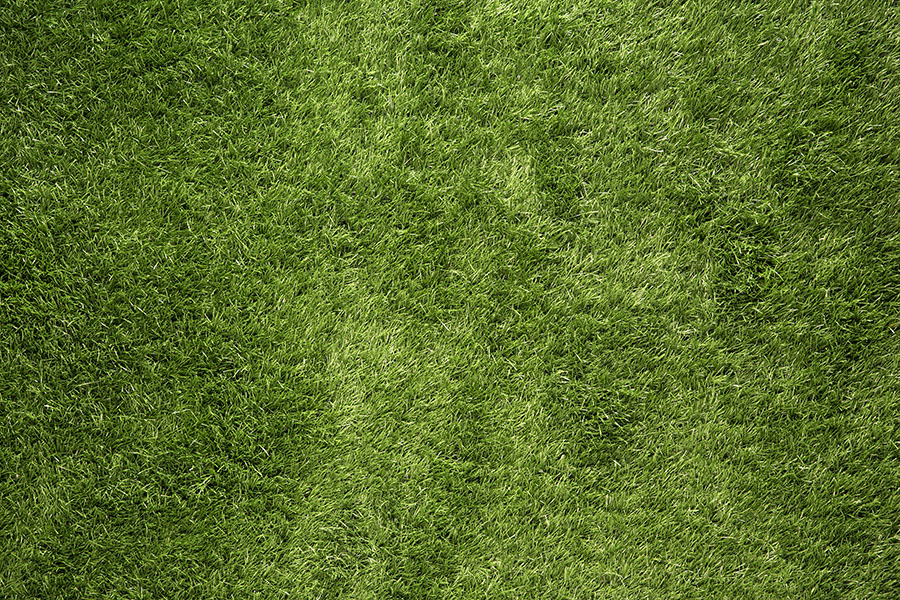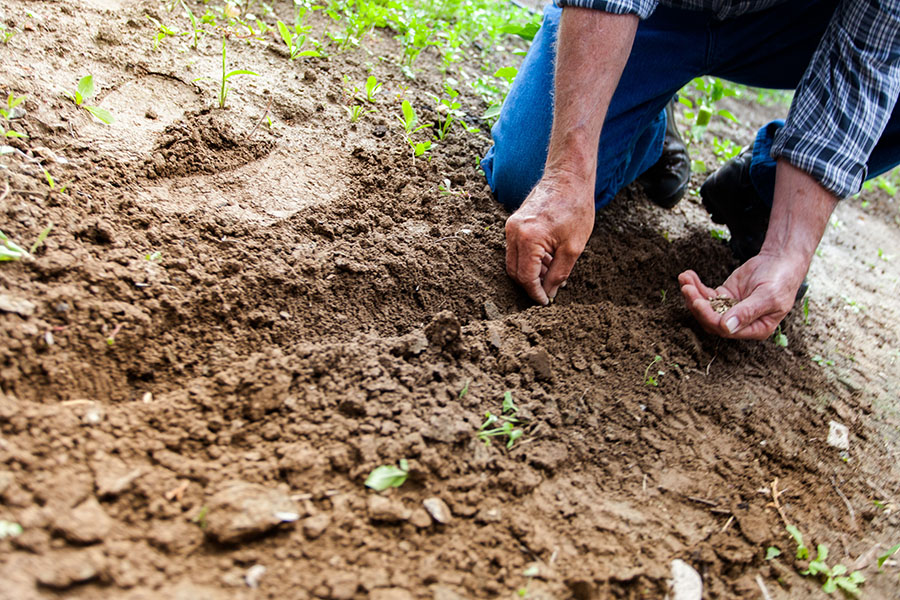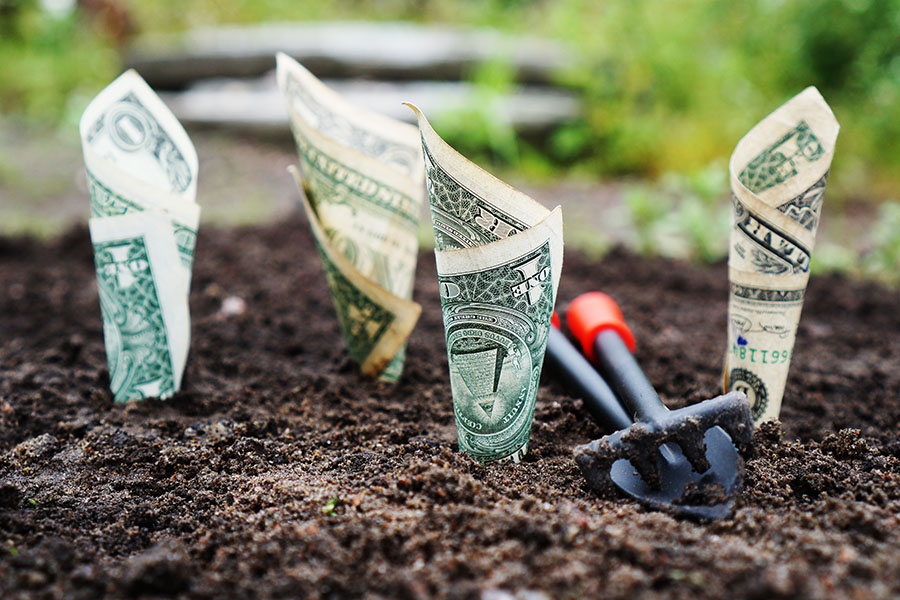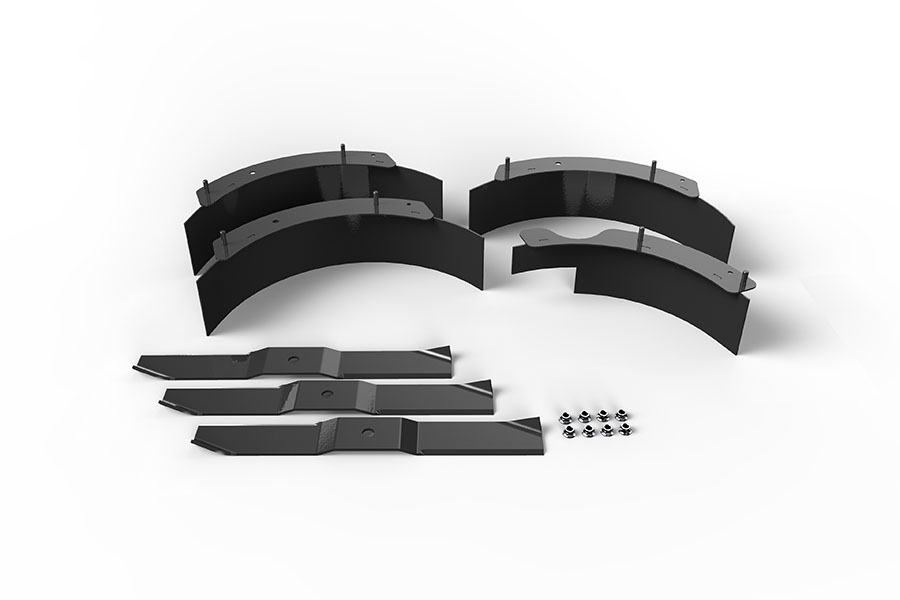Benefits of Grass Mulching
4/17/2019 5:00:00 AM
What does mulching do for your yard?
What is grass mulching?
Lawn mower mulching, or grass mulching, returns nutrients to your lawn to help it grow full, thick and green.

When mulching comes to mind, we usually think about the cedar mulch or other wood bark that's used to cover plant beds, border our homes, cover a berm or line the base of tree trunks. This isn't that. This type of mulching is cutting grass clippings into a nutritious mulch made up of super fine, tiny grass particles.
Aren't all grass clippings mulch? Not quite. Grass that's discharged from a lawn mower with regular cutting blades are still just grass clippings. Mulched grass clippings are the product of specially designed cutting blades and a mower deck baffle system that cuts and recuts grass clippings into super-fine, tiny, highly decomposable grass clipping particles. These particles, which are not discharged or bagged, fall to the lawn bed where they decompose and do several amazing things to make a lawn grow thick and green.
The science of grass mulching
Mulching grass is an easier, less expensive and more sustainable way to feed a lawn and help it grow better.
Mulch is grass feed
While water and fertilizer can feed a lawn, much of your lawn feed is already within grass itself. Take advantage of it! Grass contains rich nutrients like nitrogen, potassium and phosphorus, which are all very useful elements for vegetation growth. When then grass is mulched into tiny clippings, microorganisms living on the soil bed break down the mulch and release those nutrients back into the soil – feeding the lawn and making it grow full and bright. Additionally, creating a habitable ecosystem for those useful microorganisms enhances the ability for a lawn to fight off lawn disease and mold.
Mulching promotes soil creation
Mulch eventually becomes humus.

Not to be confused with the tasty dip, hummus, humus is the organic component of soil. The production of humus is very fascinating to those who have an appreciation for biology. As stated in the previous paragraph, microorganisms break down grass mulch to release nutrients. Through that digestion process, those microorganisms, like humans and every living thing on planet Earth, generate a waste product. The waste is called humus, which is the dark, organic, carbon-based substance in soil. Humus not only retains lots of water, it retains nutrients like calcium, magnesium and phosphorous, and is a nutrition reserve for the root systems of plants and grass.
The circle of life is cool, huh?
Mulching helps retain moisture
Finally, mulching is especially helpful for lawns during the warmer, drier summer months. In the heat of the season, soil can dry quickly, but mulching helps the soil retain water. The layer of mulch on the soil bed acts as a sun shield, which helps reduce moisture evaporation and keeps the soil temperature cooler.
Other benefits of mulching grass
It's easy to see how mulching your grass can be good for your lawn, but mulching grass passes some of its benefits directly to you.
Mulching saves money
Save the money you'd otherwise spend on a sprinkler system, water and fertilizer. Remember, the grass is your lawn's nutrition source – take advantage of the nutrition within those grass blades by mulching them instead.

Mulching saves time
Mulching grass saves on cleanup time. If you've never mulched your grass before, you might think that leaving all this grass behind would leave unsightly grass clumping all over your yard, right? Wrong. Remember, mulching turns grass clippings into super fine particles which fall back to the bottom of a lawn bed. So, as opposed to side discharging regular-sized grass clippings, there's no raking or cleanup afterward. Nor is there a need to empty a grass bagger and transport the clippings to a waste site.
Grass mulching reduces thatch buildup
Thatch is that layer of dead grass and other organic material that accumulates on a lawn bed. If not raked or removed with a dethatcher, too much thatch buildup can suppress grass growth by restricting water and nutrients from reaching the grass' root systems. Mulching's effect on thatch is twofold. First, the super fine clippings fall all the way to the soil and decompose very easily compared to regular grass clippings. Second, the microorganism-rich environment stimulated by higher levels of grass mulch creates greater populations of hungry microbes that chomp away at existing thatch.
If you're looking for an efficient dethatching solution for your yard, the best machine for dethatching in the Ariens lineup is the power brush. Click here to learn more about dethatching equipment.
Mulching is good for the environment
Did you know that according to the U.S. Environmental Protection Agency, approximately 13 percent of total landfill input is yard waste? Though that accounts for more than just grass clippings, mulching grass clippings back into your lawn helps reduce that impact.
Best grass mulching practices
Grass mulching isn't a one-size-fits-all process. There are a few things that should be considered before mulching grass, so we recommend you do some homework before mulching your own grass.
Best time to mulch grass
Mulching won't deliver favorable results with wet grass because with greater moisture content, the more prone mulched grass is to clumping. Mulch only when it's dry, like in the afternoon after the morning dew has evaporated. And depending on where you live, it may be best to limit grass mulching to the summer and fall months only.
Grass growth in the spring is not only much juicier than drier grasses in the summer, but it grows at a faster rate. Though grass mulching does help reduce thatch buildup, the rate of grass growth and more frequent mowing in the spring may outpace the ability for mulched clippings to decompose, leading to clumping and increased thatch: the opposite of the desired effect.
How to mulch grass correctly
Be conscientious about the type of grass that grows in the region where you live. Most of the time, the general rule of thumb is to cut grass no shorter than two-thirds its original length and no shorter than a length of three inches when mulching. However, this rule doesn't apply to all grass species, so do a little research beforehand to learn the appropriate mulching techniques for the lawn in your yard. Additionally, some grass types hold more moisture than others, so again, do the research.
Maintain the mower deck
Do you know how to clean a mower deck? To continue getting good results from mulching, mower decks that are used frequently for mulching grass should be cleaned more regularly than a mower deck that's discharging regular grass clippings. Smaller grass clippings can stick together more easily and buildup under the deck more quickly. That debris buildup under the mower deck then disrupts the airflow necessary to recirculate grass inside the deck's cutting chamber and mulch it effectively.
Mulching only works with well-maintained equipment. This means that both the deck aerodynamics and the mulching blades themselves need to be in tip-top condition. Mulching blades need to be sharpened more frequently so they don't lose their effectiveness chopping grass blades into super fine pieces.
When not to mulch grass clippings
Mulching won't work for everyone.
Mulching lawns with weeds
Mulching lawns that have a lot of weeds aren't doing your landscape any favors. Instead of thickening the grass, mulching will help spread weed seeds and leave your lawn with more weeds. This is where bagging beats mulching. Continue collecting grass clippings and haul them away until the weeds are gone.
Mulching lawns with pesticides
Mulching a lawn that's received applications of pesticides or fertilizers won't necessarily be harmful to a lawn, but it may not have the effect you expect. Pesticides and fertilizers kill the microorganisms that eat away at mulch, and if those bugs aren't present, there's nothing left to process the mulch clippings and release their nutrients.
Where to find mulching blades?
Do you know what it takes to start mulching? The answer is nothing more than the installation of an Ariens mulch kit composed of easy-to-install deck baffles and mulching blades. Simply install the parts under your mower deck and start cutting.

For best results, source your mulching blades and mulching baffles from your local, authorized Ariens dealer or from the Ariens online parts store at parts.ariens.com.